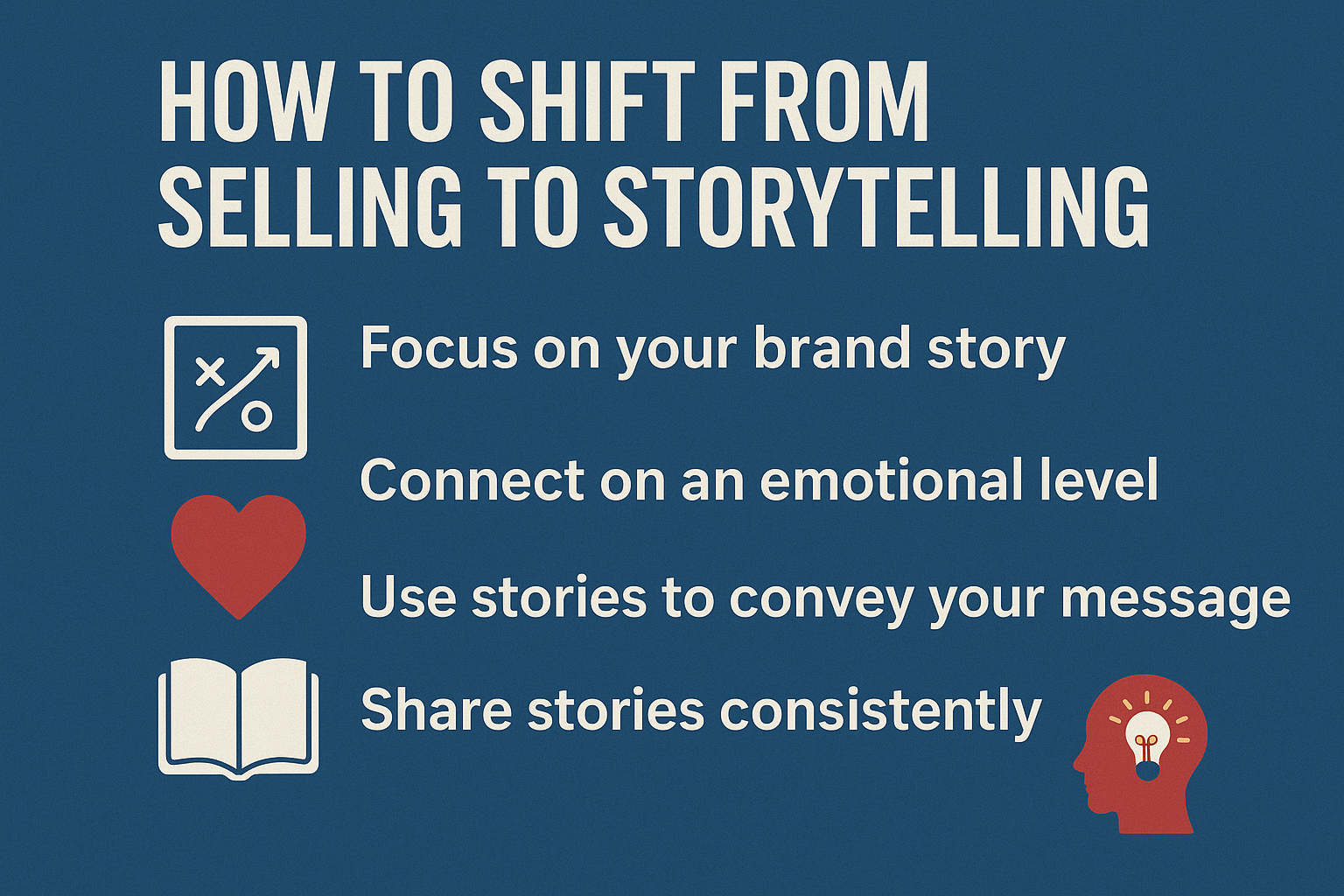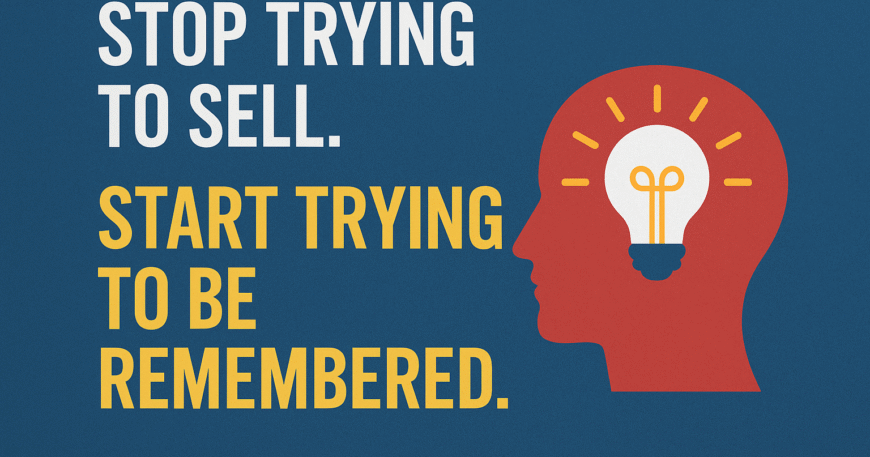Table of Contents
- Introduction
- Why Selling Hard No Longer Works
- The Psychology of Being Remembered
- Storytelling vs. Selling: The Key Difference
- Why Emotions Beat Logic Every Time
- Turning Customers into Co-Storytellers
- How to Shift from Selling to Storytelling
- The Long-Term Payoff
- Conclusion
- FAQs
Introduction
Most businesses spend their energy pushing harder, selling louder, and trying to close faster. But here’s the truth: nobody wants to be sold to. People want to be understood, engaged, and remembered. The brands that thrive today don’t win because they scream the loudest; they win because they tell stories that stick in the mind long after the first interaction.
This blog explores why moving from transactional selling to memory-driven storytelling is the key to building trust, loyalty, and long-term growth.
Why Selling Hard No Longer Works
In the past, aggressive pitches and flashy advertisements were enough to capture attention. But in a world of constant notifications, ads, and noise, people tune out anything that feels forced. Pushy sales strategies often:
- Create resistance instead of trust.
- Focus on short-term wins instead of long-term loyalty.
- Make your brand forgettable in the crowd of similar pitches.
The result? Even if you close a deal, it’s not a relationship—it’s a transaction. And transactions don’t build legacies.
The Psychology of Being Remembered
Memory is more powerful than persuasion. Research in consumer psychology shows that people are more likely to buy from a brand they remember than from one that tries to convince them in the moment. Being remembered often comes down to:
- Emotional connection: People remember how you made them feel more than what you said.
- Storytelling: Narratives activate the brain differently than facts or sales pitches—they create immersion.
- Consistency: Familiarity breeds trust. A consistent message, tone, and story across platforms reinforces your place in someone’s memory.

Storytelling vs. Selling: The Key Difference
Selling says: “Here’s why you should buy.”
Storytelling says: “Here’s who we are, why we care, and how this connects to your life.”
For example, Nike doesn’t just sell shoes. It tells stories about perseverance, victory, and human potential. Apple doesn’t just sell devices. It tells stories about creativity, individuality, and challenging the status quo.
When done right, storytelling shifts the conversation from product features to shared values—making your brand unforgettable.
Why Emotions Beat Logic Every Time
Consumers don’t make decisions purely based on logic. Neuroscience shows that emotions are the drivers behind most purchasing decisions, with logic coming in only to justify them afterward. That’s why stories that spark joy, inspiration, or even nostalgia are remembered long after a list of product features is forgotten.
Turning Customers into Co-Storytellers
The most powerful stories aren’t the ones brands tell about themselves but the ones customers share. User-generated content, testimonials, and community-driven campaigns allow your audience to become storytellers. This not only deepens trust but also extends your brand memory far beyond your own reach.
How to Shift from Selling to Storytelling
Know your audience’s story first
Instead of leading with your product, lead with your audience’s pain points, desires, and dreams. Make them the hero.Use emotion as your entry point
People rarely remember facts—but they always remember how a message made them feel. Use emotion to create stickiness.Build characters, not campaigns
Introduce brand characters, customer success stories, or founder journeys. Characters make stories relatable.Stay consistent across touchpoints
From emails to ads to social posts, your tone and message should feel like chapters of the same story—not disconnected pitches.Measure memory, not just clicks
Go beyond conversions. Track brand recall, share of voice, and repeat engagement to see if people truly remember you.
Conclusion
Selling is short-term. Being remembered is forever.
If you want to stand out in today’s noisy marketplace, don’t push harder—connect deeper. Tell stories, evoke emotions, and leave a lasting imprint. Because in the end, people don’t just buy products—they buy the memories associated with them.
FAQs
Q1. Does storytelling really lead to sales?
Yes. Storytelling builds emotional connections and trust, which influence buying decisions more powerfully than logic alone.
Q2. How do I make my brand more memorable?
Focus on consistent stories, emotions, and values across all touchpoints. Make your audience the hero, not your product.
Q3. Is pushy selling ever effective?
It might work in the short term, but it rarely creates loyalty or long-term growth. Customers today value authenticity over pressure.




